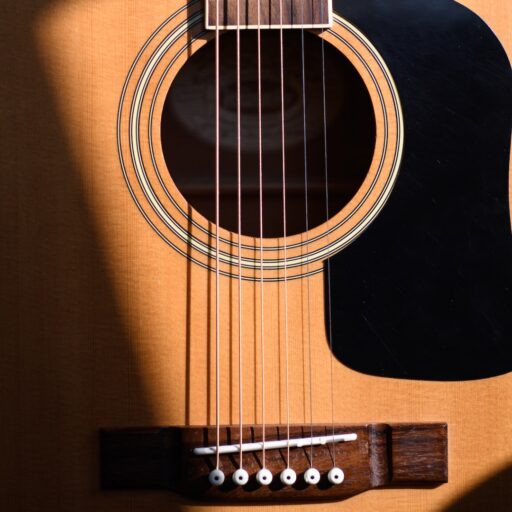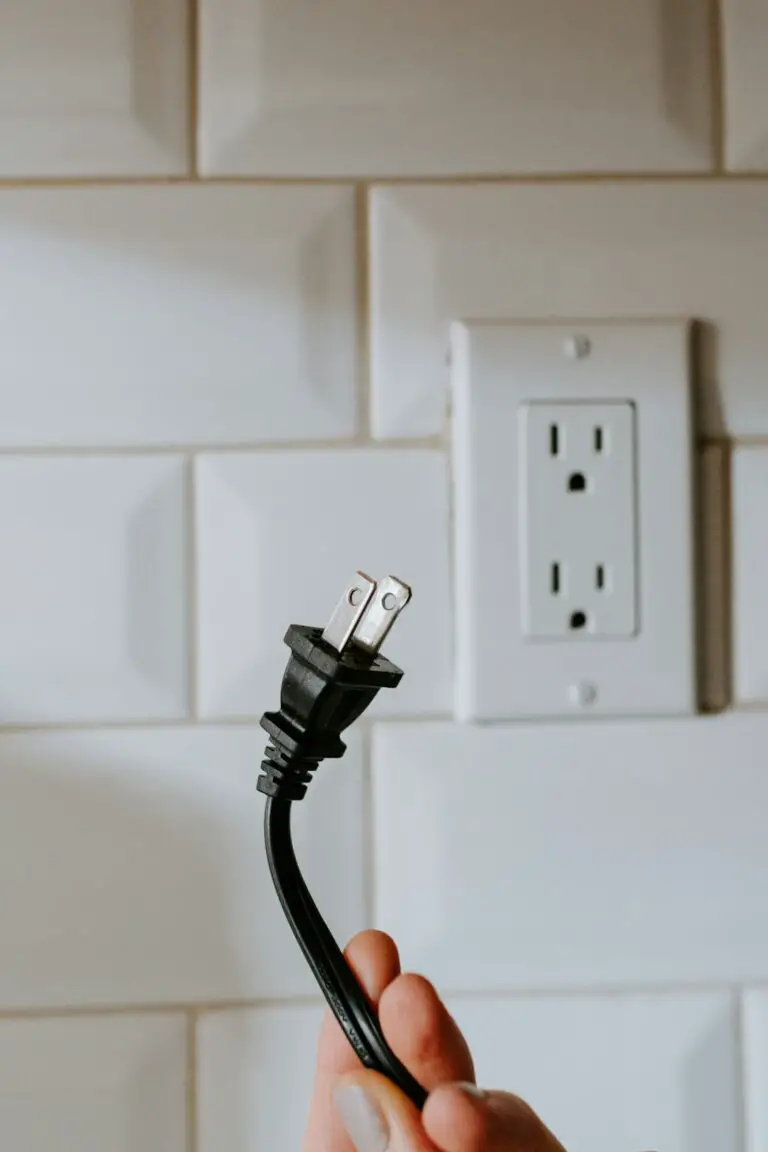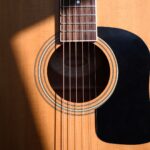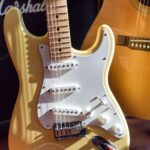Support our educational content for free when you purchase through links on our site. Learn more
Ukulele vs Guitar: 8 Key Differences You Must Know in 2025 🎸🪕
Picture this: you’re at a beach bonfire, the sun setting, and someone pulls out a ukulele, instantly sparking smiles and sing-alongs. But then, across the room, a guitarist starts strumming a soulful melody that sends chills down your spine. Which instrument would you choose to master? The ukulele’s cheerful charm or the guitar’s powerful versatility? This article unpacks 8 essential differences between these two iconic stringed instruments, helping you decide which one fits your style, goals, and lifestyle best in 2025.
Did you know the ukulele’s roots trace back to Hawaiian culture but it’s now a global sensation for beginners? Meanwhile, the guitar’s rich history spans millennia and genres. We’ll guide you through everything—from budget and playability to sound and maintenance—so you can confidently pick your perfect musical companion. Plus, we reveal our top beginner picks for both instruments and share a free ukulele lesson book to get you started!
Key Takeaways
- Ukulele is smaller, more portable, and easier to learn, making it perfect for beginners and casual players.
- Guitar offers greater versatility, richer sound, and a wider musical range, ideal for serious learners and performers.
- Budget matters: ukuleles are generally more affordable upfront, but quality guitars provide long-term value.
- Sound and playability differ significantly: nylon strings on ukuleles are gentler, while guitars demand more finger strength but reward with expressive possibilities.
- Maintenance and durability vary: guitars require more upkeep, especially steel-string acoustics and electrics.
- Our top beginner recommendations: Donner Concert Ukulele Bundle and Yamaha FG800 Acoustic Guitar.
- Bonus: Grab our free ukulele lesson book to start strumming today!
Ready to find your perfect match? Dive into our comprehensive guide and let the music play!
👉 Shop Our Favorites:
- Donner Ukuleles on Amazon | Kala Ukuleles on Sweetwater
- Yamaha Acoustic Guitars on Amazon | Fender Guitars at Guitar Center
Table of Contents
- Quick Tips and Fun Facts About Ukulele vs Guitar 🎸🪕
- Strumming Through History: The Origins and Evolution of Ukulele and Guitar 🎶
- Step #1: What’s Your Musical Personality? Choosing Between Ukulele and Guitar Based on Style and Goals 🎤
- Step #2: Budget Breakdown – How Much Should You Invest in Your First Ukulele or Guitar? 💰
- Step #3: Ukulele vs Guitar – Pros and Cons Deep Dive 🔍
- Step #4: Size, Portability, and Playability – Which Instrument Fits Your Lifestyle? 🎒
- Step #5: Sound and Tone Showdown – What’s the Vibe You’re After? 🎵
- Step #6: Learning Curve and Technique – How Fast Can You Jam? 🚀
- Step #7: Maintenance and Durability – Keeping Your Instrument in Top Shape 🛠️
- Step #8: Popular Ukulele and Guitar Brands to Consider – Trusted Names and Hidden Gems 🏆
- My Top Ukulele Recommendation for Beginners – Strum Your Way to Happiness! 🌺
- My Top Guitar Recommendation for Beginners – Rock Out with Confidence! 🤘
- Bonus: Free Ukulele Lesson Book – Your Next Step to Mastering the Island Vibes 📚
- Frequently Asked Questions About Ukulele vs Guitar ❓
- Recommended Links for Further Exploration 🔗
- Reference Links and Sources – Where We Got Our Facts From 📖
- Conclusion: Making Your Musical Match – Ukulele or Guitar? 🎯
Quick Tips and Fun Facts About Ukulele vs Guitar 🎸🪕
Welcome to the ultimate showdown between two beloved stringed instruments: the ukulele and the guitar! Whether you’re a newbie wondering which to pick or a seasoned player curious about the nuances, we’ve got you covered with quick tips and fun facts to kickstart your musical journey. If you want to dive deeper into ukuleles specifically, check out our detailed Ukulele Guide.
Quick Tips at a Glance
- ✅ Ukulele is smaller, lighter, and easier on the fingers — perfect for beginners, kids, and those with arthritis.
- ✅ Guitar offers more versatility and a wider musical range — ideal if you want to explore multiple genres or play complex solos.
- ✅ Ukulele strings are nylon, softer and gentler; guitars usually have steel or nylon strings depending on the type.
- ✅ Ukulele tuning (G-C-E-A) is simpler, while guitar tuning (E-A-D-G-B-E) offers more notes and complexity.
- ✅ Budget-wise, ukuleles are generally more affordable, but quality guitars can be found at various price points.
- ✅ Ukulele is super portable — fits in a backpack; guitars require more space but offer a richer sound.
Fun Facts 🎉
- The ukulele was introduced to Hawaii by Portuguese immigrants in the late 1800s and quickly became a cultural icon.
- Guitars date back thousands of years, evolving through many forms to become the versatile instrument we know today.
- Ukulele strings’ low tension makes them a favorite for players with sensitive fingertips or hand mobility issues.
- Despite its small size, the ukulele can produce surprisingly rich and complex music — just ask virtuosos like Jake Shimabukuro!
- Guitars come in many flavors: acoustic, electric, classical, and bass — each with its own personality and sound palette.
Ready to unravel the full story? Let’s strum into the history and evolution of these two fascinating instruments!
Strumming Through History: The Origins and Evolution of Ukulele and Guitar 🎶

Understanding where these instruments come from helps you appreciate their unique charm and how they fit into your musical life.
The Ukulele’s Hawaiian Roots
The ukulele’s story begins in the 1880s when Portuguese immigrants brought a small guitar-like instrument called the machete to Hawaii. The locals embraced it, adapting it into the ukulele — which means “jumping flea” in Hawaiian, a nod to the fingers’ quick movements on the fretboard. Over time, the ukulele became synonymous with Hawaiian music and culture, spreading worldwide thanks to its cheerful sound and approachable size.
The Guitar’s Ancient Lineage
The guitar’s ancestry stretches back over 3,000 years, with early stringed instruments found in ancient Mesopotamia and Egypt. The modern guitar evolved through the Renaissance and Baroque periods, culminating in the classical guitar designs of the 19th century. Today, guitars come in many varieties — acoustic, electric, classical, and bass — each shaping the soundscape of countless genres from blues and rock to jazz and folk.
Key Historical Milestones
| Instrument | Origin | Key Developments | Cultural Impact |
|---|---|---|---|
| Ukulele | Hawaii, 1880s | Nylon strings, four-string tuning | Hawaiian music, pop culture, beginner-friendly instrument |
| Guitar | Ancient civilizations | Steel strings, six-string tuning, electric variants | Global music genres, solo and ensemble instrument |
For more on guitars’ rich history, check out our Comprehensive Guide to Guitars.
Step #1: What’s Your Musical Personality? Choosing Between Ukulele and Guitar Based on Style and Goals 🎤
Before you pick up an instrument, ask yourself: What kind of music do I want to play? What’s my vibe?
Ukulele: The Happy-Go-Lucky Companion
- If you love light, breezy, island-inspired tunes or want an instrument that’s easy to carry on your travels, the ukulele is your best friend.
- It’s fantastic for strumming simple chords, singing along, and jamming with friends.
- Great for beginners, kids, and casual players who want quick gratification without a steep learning curve.
Guitar: The Versatile Powerhouse
- If you dream of playing rock anthems, blues solos, fingerstyle classics, or jazz standards, the guitar’s your go-to.
- It offers a broader range of sounds and techniques, from strumming to intricate fingerpicking.
- Ideal for players who want to invest time and effort into mastering a complex and rewarding instrument.
Matching Your Goals
| Goal/Style | Ukulele | Guitar |
|---|---|---|
| Casual strumming & singing | ✅ | ✅ |
| Complex solos & fingerpicking | ❌ | ✅ |
| Portability & travel | ✅ | ❌ |
| Playing in bands | Limited | ✅ |
| Learning speed | Faster | Slower |
Remember, your musical personality is the compass that guides your choice — not just size or price.
Step #2: Budget Breakdown – How Much Should You Invest in Your First Ukulele or Guitar? 💰
Money talks, and it’s a big factor in your decision. Here’s the lowdown from our Guitar Brands™ experts.
Ukulele Budget Basics
- You can snag a decent beginner ukulele for around $100 — brands like Donner, Kala, and Lanikai offer solid starter models.
- Higher-end ukuleles, especially those handcrafted in Hawaii (e.g., Kamaka, Kanile’a), can cost significantly more but deliver exquisite tone and craftsmanship.
- Nylon strings and smaller size keep maintenance costs low.
Guitar Budget Basics
- A playable beginner guitar typically starts around $300-$500, with brands like Yamaha, Fender, and Taylor offering excellent entry-level models.
- Acoustic guitars with solid wood tops and better hardware push the price up but improve tone and playability.
- Electric guitars add cost for amps and accessories.
Budget Comparison Table
| Aspect | Ukulele | Guitar |
|---|---|---|
| Entry-level price | ~$100 | ~$300-$500 |
| Mid-range quality | $200-$600 | $500-$1,000 |
| High-end models | $1,000+ (Hawaiian) | $1,000+ (Taylor, Martin) |
| Maintenance cost | Low | Moderate |
| Accessories needed | Few (case, tuner) | More (case, tuner, picks, amp for electrics) |
Pro Tip 💡
Start with a budget-friendly model to test the waters. You can always upgrade once you’re hooked!
👉 CHECK PRICE on:
- Donner Ukulele: Amazon | Sweetwater | Donner Official Website
- Yamaha Acoustic Guitar: Amazon | Guitar Center | Yamaha Official Website
Step #3: Ukulele vs Guitar – Pros and Cons Deep Dive 🔍
Let’s get real and weigh the strengths and weaknesses of each instrument.
Ukulele Pros ✅
- Easy on the fingers thanks to soft nylon strings and low tension.
- Highly portable — fits in backpacks and small cases.
- Affordable entry point for beginners.
- Quick to learn basic chords, making it rewarding early on.
- Great for social jams and sing-alongs.
Ukulele Cons ❌
- Limited musical range compared to guitar.
- Quieter volume, which can be a challenge in noisy settings.
- Smaller fret spacing can be tricky for players with large fingers.
- Less versatile for genres like rock, blues, or classical.
Guitar Pros ✅
- Wide musical versatility — from classical to metal.
- Louder and fuller sound suitable for solo and band settings.
- More expressive possibilities with fingerpicking, bending, and effects.
- Variety of styles and sizes to fit your preferences.
Guitar Cons ❌
- Steeper learning curve, especially with steel strings.
- Heavier and less portable than ukuleles.
- Higher initial investment for quality instruments.
- Can be challenging for small hands or arthritis sufferers.
Comparison Table: Ukulele vs Guitar
| Feature | Ukulele | Guitar |
|---|---|---|
| Number of Strings | 4 | 6 |
| String Material | Nylon | Steel or nylon |
| Size | 21-26 inches | 38-41 inches |
| Tuning | G-C-E-A | E-A-D-G-B-E |
| Learning Curve | Easier | Moderate to hard |
| Portability | Excellent | Moderate |
| Sound Volume | Soft | Loud |
| Price (Entry Level) | Lower | Higher |
For a detailed brand comparison, visit our Guitar Brands Showcase.
Step #4: Size, Portability, and Playability – Which Instrument Fits Your Lifestyle? 🎒
Your lifestyle matters! Let’s see how these instruments stack up for on-the-go musicians.
Size and Weight
- Ukulele: Compact and lightweight (typically under 1 lb), perfect for travel, commuting, or casual play.
- Guitar: Larger and heavier (3-5 lbs for acoustics), better suited for home, studio, or gigs.
Playability Factors
- Ukulele’s closer fret spacing means less hand stretch but can be cramped for big fingers.
- Guitar’s wider fretboard accommodates complex chords but requires more finger strength.
- String tension affects finger fatigue — nylon ukulele strings are gentler than steel guitar strings.
Portability Scorecard
| Instrument | Portability | Ideal For |
|---|---|---|
| Ukulele | ⭐⭐⭐⭐⭐ | Travelers, students, casual players |
| Guitar | ⭐⭐⭐ | Performers, serious learners, studio use |
Personal Story 🎤
One of our team members started on a Kala soprano ukulele during college travels — it fit snugly in a backpack and sparked countless impromptu jam sessions. Later, they transitioned to a Taylor 214ce acoustic guitar for richer sound and stage presence.
Step #5: Sound and Tone Showdown – What’s the Vibe You’re After? 🎵
Sound is king! Let’s explore the tonal personalities of ukuleles and guitars.
Ukulele Sound Profile
- Bright, cheerful, and warm — perfect for folk, pop, and Hawaiian music.
- Soft volume makes it ideal for intimate settings or recording with microphones.
- Nylon strings produce a mellow, less metallic tone.
Guitar Sound Profile
- Rich, resonant, and dynamic — capable of blues, rock, jazz, classical, and more.
- Steel strings offer brightness and sustain; nylon strings on classical guitars provide warmth.
- Electric guitars add effects and amplification for endless tonal possibilities.
Sound Spectrum Comparison
| Aspect | Ukulele | Guitar |
|---|---|---|
| Volume | Low to moderate | Moderate to loud |
| Tonal Range | Limited, focused on mid-high frequencies | Wide, from bass to treble |
| Sustain | Short | Long |
| Expression | Simple strumming patterns | Complex fingerpicking, bending, vibrato |
Pro Tip 🎶
If you want to record or perform, consider how the instrument’s sound fits your environment. Ukuleles shine in cozy spaces; guitars dominate larger venues.
Step #6: Learning Curve and Technique – How Fast Can You Jam? 🚀
How quickly can you go from zero to hero? Let’s break down the learning journey.
Ukulele Learning Curve
- Fewer strings and simpler chords mean you can play your first songs within days.
- Nylon strings reduce finger soreness, encouraging longer practice sessions.
- Chord shapes are easier to memorize, and strumming patterns are straightforward.
- Great for kids and absolute beginners.
Guitar Learning Curve
- Six strings and more complex chord shapes require patience and practice.
- Steel strings can cause fingertip soreness initially.
- Techniques like fingerpicking, barre chords, and bending add layers of difficulty.
- Offers a lifetime of learning and mastery opportunities.
Learning Timeline Comparison
| Skill Level | Ukulele (Approximate) | Guitar (Approximate) |
|---|---|---|
| Play simple songs | 1-2 weeks | 3-4 weeks |
| Master basic chords | 1 month | 2-3 months |
| Intermediate skills | 3-6 months | 6-12 months |
| Advanced techniques | 1+ year | Several years |
Anecdote 🎸
Our intern picked up the ukulele in a week and was strumming “Somewhere Over the Rainbow” confidently. Meanwhile, our seasoned guitarist spent months perfecting fingerstyle arrangements on a Martin D-28.
Step #7: Maintenance and Durability – Keeping Your Instrument in Top Shape 🛠️
Taking care of your instrument ensures it sounds great and lasts for years.
Ukulele Maintenance
- Nylon strings last longer and are less prone to corrosion.
- Smaller size means less vulnerability to damage but watch out for humidity (especially for wooden ukuleles).
- Regular tuning and occasional string replacement keep it singing.
- Cases and gig bags are affordable and compact.
Guitar Maintenance
- Steel strings need more frequent replacement due to corrosion and wear.
- Larger body and neck require careful handling to avoid warping or cracking.
- Acoustic guitars benefit from humidity control devices.
- Electric guitars need additional care for electronics and hardware.
Durability Comparison Table
| Aspect | Ukulele | Guitar |
|---|---|---|
| String lifespan | 3-6 months | 1-3 months |
| Sensitivity to humidity | Moderate | High |
| Fragility | Low | Moderate |
| Maintenance effort | Low | Moderate to high |
Maintenance Tips
- Store instruments in cases when not in use.
- Keep away from extreme temperatures and moisture.
- Tune regularly to avoid neck strain.
- Clean strings and fretboards with appropriate products.
Step #8: Popular Ukulele and Guitar Brands to Consider – Trusted Names and Hidden Gems 🏆
Choosing a brand can be as important as choosing the instrument type. Here are some favorites from our Guitar Brands™ experts.
Top Ukulele Brands
| Brand | Highlights | Recommended Models |
|---|---|---|
| Kala | Affordable, beginner-friendly | Kala KA-15S, Kala KA-T |
| Lanikai | Good tone, great value | Lanikai LU-21, Lanikai LU-11 |
| Kamaka | Hawaiian craftsmanship, premium | Kamaka HF-3, Kamaka HF-2 |
| Cordoba | Classical guitar expertise | Cordoba 15CM, Cordoba 20TM |
Top Guitar Brands
| Brand | Highlights | Recommended Models |
|---|---|---|
| Yamaha | Reliable, versatile | Yamaha FG800, Yamaha Pacifica |
| Fender | Iconic, great for beginners & pros | Fender CD-60, Fender Stratocaster |
| Taylor | Premium tonewoods, playability | Taylor GS Mini, Taylor 214ce |
| Martin | Legendary acoustic guitars | Martin D-15, Martin LX1E |
Brand Selection Tips
- For ukuleles, Kala and Lanikai offer excellent starter options.
- For guitars, Yamaha and Fender provide quality and value for beginners.
- Premium brands like Taylor and Martin are investments for serious players.
👉 Shop Ukuleles on:
👉 Shop Guitars on:
My Top Ukulele Recommendation for Beginners – Strum Your Way to Happiness! 🌺
Donner Concert Ukulele Bundle
| Feature | Rating (1-10) |
|---|---|
| Design | 8 |
| Sound Quality | 7 |
| Playability | 9 |
| Value for Money | 9 |
Why We Love It:
The Donner Concert Ukulele Bundle is a fantastic starter kit that includes everything you need: a well-built concert-sized uke, a gig bag, tuner, and extra strings. Its warm tone and smooth playability make it a joy for beginners. The nylon strings are gentle on fingers, and the concert size hits the sweet spot between portability and sound projection.
User Review Highlight:
“I bought this uke to learn during quarantine, and it exceeded my expectations. The bundle had all the accessories, and the sound is surprisingly rich for the price!” — Sarah M.
👉 CHECK PRICE on:
My Top Guitar Recommendation for Beginners – Rock Out with Confidence! 🤘
Yamaha FG800 Acoustic Guitar
| Feature | Rating (1-10) |
|---|---|
| Design | 8 |
| Sound Quality | 8 |
| Playability | 7 |
| Value for Money | 9 |
Why We Love It:
The Yamaha FG800 is a staple in the beginner guitar world. It boasts a solid spruce top for a bright, balanced tone and a comfortable neck profile that suits new players. It’s durable, versatile, and sounds way above its price point, making it a perfect first guitar.
User Review Highlight:
“This guitar helped me fall in love with playing. It’s easy to hold, sounds great unplugged, and stays in tune well.” — Mike D.
👉 CHECK PRICE on:
Bonus: Free Ukulele Lesson Book – Your Next Step to Mastering the Island Vibes 📚
Ready to start playing right now? We’ve got a free ukulele lesson book packed with beginner-friendly chords, strumming patterns, and songs that’ll have you jamming in no time.
- Simple step-by-step lessons.
- Tips on tuning and maintenance.
- Fun songs to practice your skills.
Grab your free copy and start your musical adventure today!
Download your free ukulele lesson book here: Free Ukulele Lesson Book
Frequently Asked Questions About Ukulele vs Guitar ❓
Q1: Which instrument is easier to learn for absolute beginners?
A: The ukulele generally has a gentler learning curve due to fewer strings and softer nylon strings, making it easier to start playing songs quickly.
Q2: Can I play the same songs on both instruments?
A: Many songs can be adapted for both, but guitars offer more complexity and range, while ukuleles shine with simpler chord progressions.
Q3: Is the ukulele just a kids’ instrument?
A: Absolutely not! Ukuleles are enjoyed by players of all ages and skill levels, including professional musicians.
Q4: What about finger pain when starting?
A: Ukulele nylon strings are easier on fingertips than steel guitar strings, which can cause soreness initially.
Q5: Which is better for playing in a band?
A: Guitars are more common in bands due to their volume and versatility, but ukuleles can add unique textures.
For more FAQs, visit our Guitar Buying Guide.
Recommended Links for Further Exploration 🔗
- Ukulele Tricks – Ukulele vs Guitar — Great beginner insights and comparisons.
- Terry Carter Music Store Blog — Detailed pros and cons with community perspective.
- Music To Your Home – Ukulele vs Guitar — Historical context and practical advice.
- Guitar Brands Showcase — Explore top guitar and ukulele brands.
- Acoustic Guitars Category — Dive into acoustic guitar options and reviews.
Reference Links and Sources – Where We Got Our Facts From 📖
- Ukulele Tricks: https://ukuleletricks.com/ukulele-vs-guitar/
- Terry Carter Music Store: https://terrycartermusicstore.com/blogs/reviews/ukulele-vs-guitar
- Music To Your Home: https://www.musictoyourhome.com/blog/ukulele-vs-guitar/
- Kala Brand Official: https://kalabrand.com/
- Yamaha Guitars: https://usa.yamaha.com/products/musical_instruments/guitars_basses/index.html
- Donner Official Website: https://www.donnerdeal.com/
- Taylor Guitars: https://www.taylorguitars.com/
Ready to make your choice? Whether you pick the cheerful ukulele or the versatile guitar, the most important thing is to have fun and keep strumming! 🎶
Conclusion: Making Your Musical Match – Ukulele or Guitar? 🎯

After our deep dive into the world of ukuleles and guitars, it’s clear that both instruments have unique charms and challenges. The ukulele shines as a friendly, portable, and affordable instrument, perfect for beginners, travelers, and those craving a cheerful, mellow sound. Our top pick, the Donner Concert Ukulele Bundle, scores high for playability and value, making it a fantastic gateway into music with minimal fuss. Its nylon strings and compact size make learning a breeze, but keep in mind its quieter volume and limited tonal range.
On the flip side, the guitar offers unmatched versatility, richer sound, and a broader musical landscape. The Yamaha FG800 Acoustic Guitar stands out as a reliable, beginner-friendly choice that balances quality and ease of play. While the guitar demands more patience and investment, it rewards you with endless styles and expressive possibilities.
So, what’s the final verdict? If you want to start playing quickly, enjoy portability, and prefer a softer sound, the ukulele is your best bet. If you’re ready to commit to a more challenging but versatile instrument with a fuller sound, the guitar awaits. Remember, your musical personality, goals, and lifestyle are the ultimate guides.
Whichever you choose, the key is to have fun, keep practicing, and let the music flow! 🎶
Recommended Links for Shopping and Learning 🔗
Shop Our Top Ukulele Picks
- Donner Concert Ukulele Bundle:
Amazon | Sweetwater | Donner Official Website - Kala Ukuleles:
Amazon Kala Ukuleles | Sweetwater Kala | Kala Official Website
Shop Our Top Guitar Picks
- Yamaha FG800 Acoustic Guitar:
Amazon Yamaha FG800 | Guitar Center | Yamaha Official Website - Fender Guitars:
Amazon Fender Guitars | Guitar Center Fender | Fender Official Website - Taylor Guitars:
Amazon Taylor Guitars | Taylor Official Website
Recommended Books for Beginners
- Ukulele for Dummies by Alistair Wood — Amazon Link
- Hal Leonard Guitar Method by Will Schmid and Greg Koch — Amazon Link
- The Ukulele Handbook by Gavin Pretor-Pinney and Tom Hodgkinson — Amazon Link
Frequently Asked Questions About Ukulele vs Guitar ❓
What are the main differences between a ukulele and a guitar?
The ukulele typically has four nylon strings and is much smaller (21-26 inches), tuned to G-C-E-A, producing a bright, mellow sound. The guitar has six strings (steel or nylon), is larger (38-41 inches), tuned to E-A-D-G-B-E, and offers a wider tonal range and volume. Guitars are more versatile across genres, while ukuleles excel in portability and ease of play.
Is it easier to learn ukulele or guitar for a beginner?
Generally, the ukulele is easier to learn due to fewer strings, simpler chord shapes, and softer nylon strings that reduce finger pain. Beginners often play their first songs on the ukulele within days. The guitar has a steeper learning curve because of more strings, complex chords, and steel strings that require finger strength and calluses.
Can you play guitar chords on a ukulele?
While some chord shapes overlap, guitar chords cannot be directly transferred to the ukulele because of the difference in tuning and number of strings. However, many guitar chords have ukulele equivalents, and with some adjustment, you can play similar chord progressions. Learning ukulele chord charts is recommended for best results.
How does the size of a ukulele compare to a guitar?
Ukuleles are significantly smaller and lighter, making them highly portable and easy to hold, especially for children or players with smaller hands. Guitars are larger, heavier, and require more space but provide a fuller sound and more playing options.
Which instrument is more versatile, ukulele or guitar?
The guitar is more versatile due to its wider range of notes, string configurations, and ability to cover many genres from classical to rock, jazz, and metal. The ukulele is more specialized, often associated with folk, pop, and Hawaiian music, though virtuosos have expanded its boundaries.
Do ukulele and guitar have the same tuning?
No. The ukulele is usually tuned to G-C-E-A, while the guitar is tuned to E-A-D-G-B-E. This difference affects chord shapes and fingerings. Some ukuleles (bass ukuleles) have alternate tunings closer to guitar bass strings, but standard ukuleles and guitars differ significantly.
Can learning to play the ukulele help with learning to play the guitar?
Absolutely! Learning the ukulele builds finger dexterity, rhythm, and basic chord knowledge, which can ease the transition to guitar. However, guitar players must adapt to more strings, different tuning, and additional techniques like barre chords and fingerpicking.
What should I consider when choosing between a ukulele and a guitar?
Consider your musical goals, budget, hand size, and lifestyle. If you want portability and quick gratification, ukulele is ideal. If you seek versatility and a richer sound, guitar is better. Also, think about the genres you want to play and your willingness to invest time in learning.
Reference Links and Sources – Where We Got Our Facts From 📖
- Ukulele Tricks: https://ukuleletricks.com/ukulele-vs-guitar/
- Terry Carter Music Store: https://terrycartermusicstore.com/blogs/reviews/ukulele-vs-guitar
- Music To Your Home – Ukulele vs Guitar: Choose Your Instrument: https://www.musictoyourhome.com/blog/ukulele-vs-guitar/
- Kala Brand Official Website: https://kalabrand.com/
- Yamaha Guitars Official Website: https://usa.yamaha.com/products/musical_instruments/guitars_basses/index.html
- Donner Official Website: https://www.donnerdeal.com/
- Taylor Guitars Official Website: https://www.taylorguitars.com/
- Fender Official Website: https://www.fender.com/
For more expert insights and gear reviews, explore our Guitar Brands Showcase and Guitar Buying Guide.






